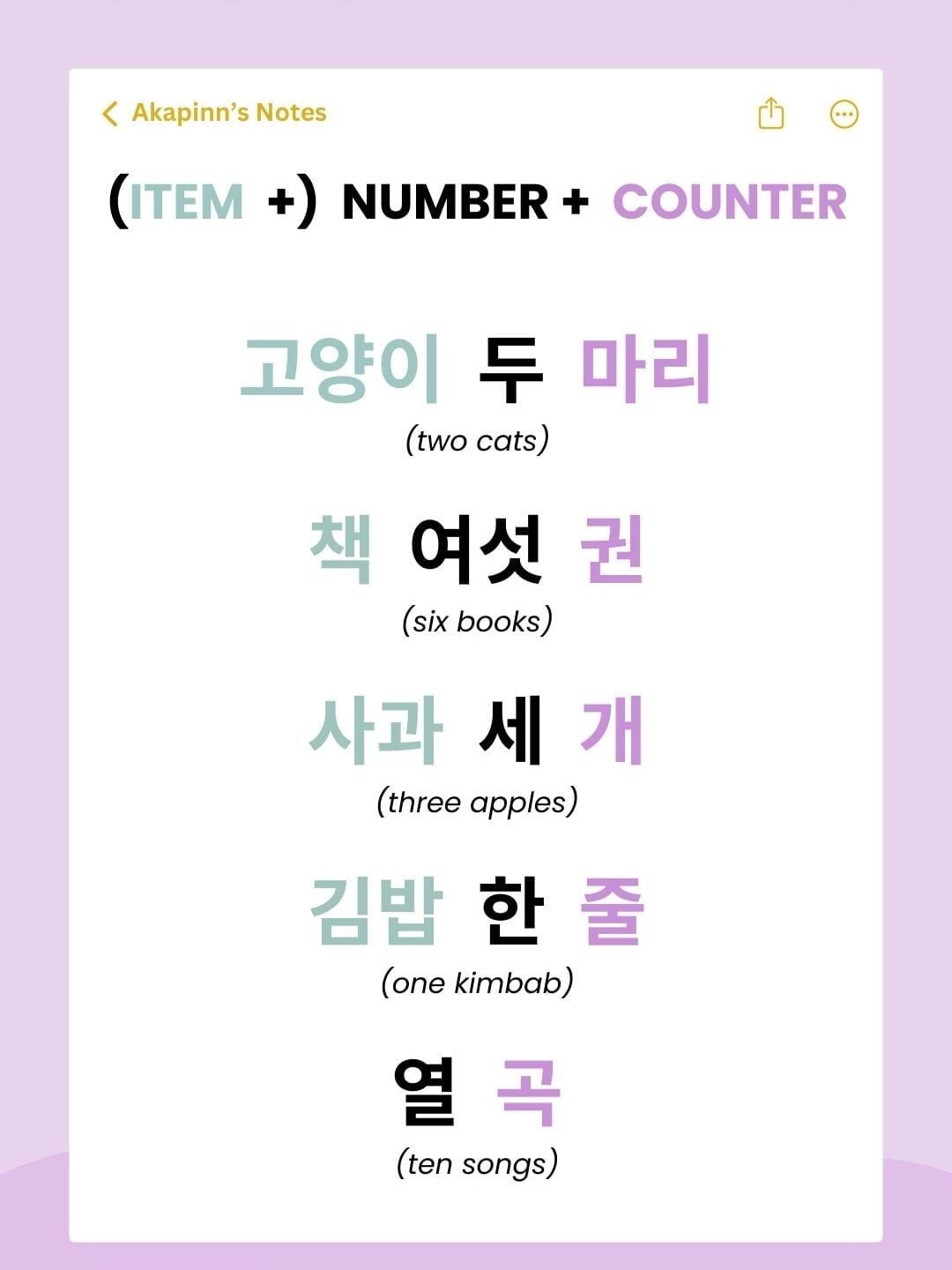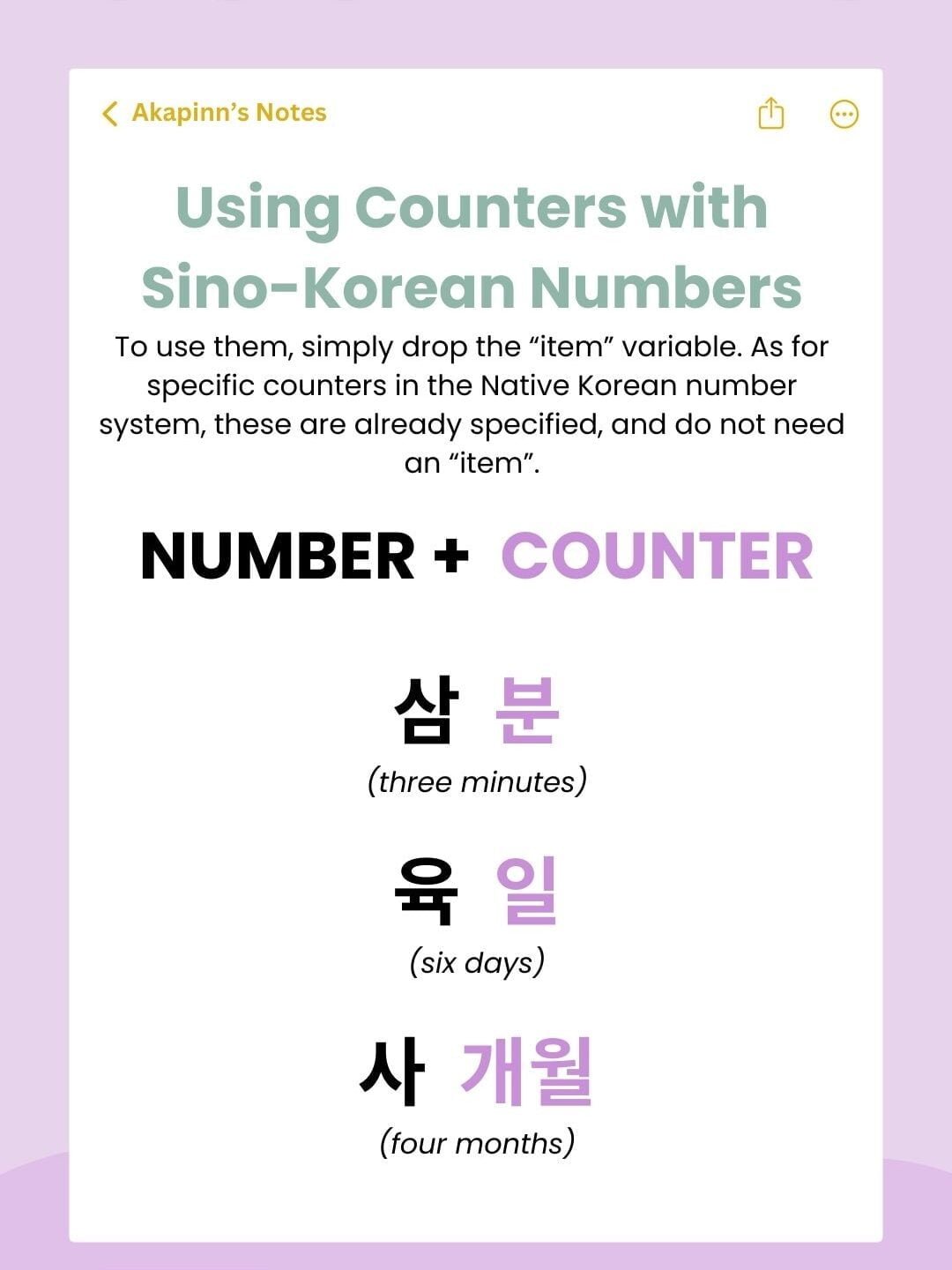Hey there Korean learners! Today, we talk about counters. And if you don’t know what it is yet, don’t worry, you’ll know all about them by the end of this article!
Note : to learn the counters in Korean, you will need to know the Korean Number Systems, which you can learn by checking this article. It’s important to be familiar with it, because we will use them a lot in this post!
So in English, you can say “two dogs”. That’s all you need to talk about them, two words : “two” to indicate how many there are, and “dogs” to indicate what you are talking about.
In Korean, “two dogs” will be “강아지 두 마리” which means “puppy(dog) – two – counter for animals”

Sounds difficult? It is a bit, at the beginning. And it is simply because you’re not used to this system. But once you get the hang of it, it will flow naturally.
English actually has a similar concept, for example, if you want water, you can ask for “one cup of water”, in which “one” is the number, “cup” is the counter, and “water” is the object.

But no worries ! We will learn how to use the counters, and which counters to use in which situations in a minute.
Table of Contents
The Korean Number Systems
As you can expect, you will use numbers to count things.
But as you know if you’ve studied the Korean Number Systems, there are two different number systems in Korean.
- The Sino-Korean number system (일 이 삼)
- The Native Korean numbers system (하나 둘 셋)
So you might be wondering: “But which Korean number system do I use to use counters, then ?”
Most of the time, you will use the Native Korean number system to count things. But some very important counters will use the Sino-Korean number system.
They will use slightly different structures, but it’s really not complicated.
Using Counters with Native Korean Numbers
ITEM + NUMBER + COUNTER
고양이 두 마리 (two cats)
책 여섯 권 (six books)
사과 세 개 (three apples)
김밥 한 줄 (one kimbab)
For very specific things, you drop the item, because it is included in the counter.
열 곡 (ten songs)

하나 => 한
둘 => 두
셋 => 세
넷 => 네
The same goes for telling your age, as we’ve seen in this lesson.
Change these for any number ending with 1, 2, 3 or 4.
Using Counters with Sino-Korean Numbers
To use them, simply drop the “item” variable. As for specific counters in the Native Korean number system, these are already specified, and do not need an “item”.
NUMBER + COUNTER
삼 분 (three minutes)
육 일 (six days)
사 개월 (four months)

Most Common Korean Counters
Now that we know how to use the counters, let’s check about the most common counters in Korean. Some counters are used way more frequently than others. If you want to study counters but take it slowly, I suggest you start by studying these. Get used to using them, then you can continue by learning more uncommon ones.
If you want to study only a couple of them, I suggest you memorize 개, 마리 and 명. You will learn the counters related to time when you learn about telling the time, and the others as you go in your Korean learning journey.
But if you want to actively learn the counters, you can refer to this table for common ones.
When you don’t know a counter for an inanimate thing, you can use 개 and you will be understood, even if the thing you’re talking about has a specific counter. But it can be a bit awkward, so I suggest you learn the most common counters.
| Counter | Usage | Number System | Example |
| 개 | The general counter for inanimate things (default classifier) | Native | 펜 네 개 (Four pens) |
| 마리 | Animals, bugs | Native | 강아지 한 마리 (One puppy) |
| 명 | Counting people (informal) | Native | 친구 네 명 (Four friends) |
| 분 | Counting people (formal) | Native | 네 분 (four people) |
| 일 | Counter for days | Sino | 삼 일 (three days) |
| 년 | Counter for years | Sino | 삼 년 (three years) |
| 개월 | Counter for months | Sino | 육개월 (six months) |
| 달 | Counter for months | Native | 여섯달 (six months) |
| 분 | Counter for minutes | Sino | 십오 분 (Fifteen minutes) |
| 조각 | Counter for slices | Native | 피자 두 조각 (Two slices of pizza) |
| 가지 | Counting categories, groups, kinds | Native | 반찬 두 가지 (Two kinds of banchan) |
| 권 | Counting books, magazines… | Native | 만화책 한 권 (One comic book) |
| 대 | Counting machines, vehicles, appliances | Native | 자동차 두 대 (Two cars) |
| 벌 | Counting clothes (not socks, shoes) | Native | 셔츠 세 벌 (Three shirts) |
| 병 | Counting bottles | Native | 우유 한 병 (One bottle of milk) |
| 잔 | Counting cups, glasses (beverage) | Native | 물 한 잔 (One glass of water) |
| 장 | Counting thin and flat objects (paper…) | Native | 사진 두 장 (Two photos) |
| 줄 | Counting things arranged in lines | Native | 김밥 세 줄 (Three kimbap) |
| 그릇 | Counting bowls of food | Native | 국 한 그릇 (One bowl of soup) |
| 도 | Counting degrees | Sino | 십도 (Ten degrees) |
| 곡 | Counting songs, music pieces | Native | 일층 (first floor) |
| 봉지 | Counting packages of food | Native | 열 곡 (ten songs) |
| 층 | Counting floors, levels | Sino | 라면 네 봉지 (four packs of ramyeon) |
Wrap up
And we’re done! For now at least. By studying these, you should feel comfortable counting simple things in Korean. Later on, I will add more counters to cure a complete list of counters that you can refer to whenever you need.
Don’t forget to check how to count in Korean if you need help with that, and until next time!




